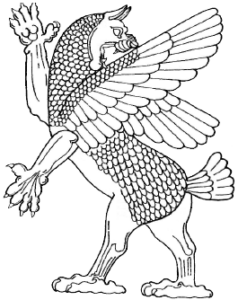Item number: 58355
An important sterling silver and 800 grade silver coffee and tea service on tray,
Cologne circa 1900/1905 by Orivit
Standing on a cuboid tray with curved edges to the length. On the narrow sides the handles divided to the centre by a bar and merging into the wall through two arched ornaments. The narrow sides decorated by abstract blossom decoration. The rounded bodies divided into several sections, each of which is decorated by an analogous frieze to the upper sides and subdivided to the display sides by smoothly polished, arch-shaped fields. The spout of the coffee and the tea pot is fixed to the body by a branch-like ornament, the strongly angled handles are connected to the body through heat stoppers in bone. The decoration of the lids follows the ornamentation of the display sides, the folds of which form a continuous ornament with their knobs. The original gilding of the sugar bowl is very well preserved, the gilding of the milk jug only visible to the lower part.
The coffee and tea service came in this configuration (the tray made in 800 silver and the coffee and tea service in sterling silver) as a wedding gift from the great-grandparents into the possession of the last owner and was acquired directly in Cologne at the time. The individual parts of the service have the following model numbers: teapot (#152), coffee pot (#151), milk jug (#153), sugar bowl (#154), tray (#155).
A rare, exceptionally elegant coffee and tea service in silver in very good, authentic condition – original without monograms and without repairs. A counterpart to be found in the possession of the Bröhan Museum, Berlin and is illustrated in: Dedo von Kerssenbrock-Krosigk (ed.): Metallkunst der Moderne (Bestandskataloge des Bröhan-Museums VI) [Metal art of the modern age (stock catalogues of the Bröhan Museum VI)], Berlin 2001, p. 255.
This set has also been published in the contemporary literature in 1904, there without sugar bowl and tray at: Die Rheinlande: Vierteljahrsschr. d. Verband der Kunstfreunde in den Ländern am Rhein [Die Rheinlande: Quarterly publication of the Association of Friends of the Arts in the countries along the Rhine], edition 8, 1904, p. 592 (for the digitalized edition in german please see here).
Another coffee tea service with tray by Orivit in silver with very similar ornamentation is also in the possession of the Rijksmuseum, Amsterdam.
This service was a wedding present for the great-grandparents of the last owner and was acquired in this form in Cologne. Teapot (model no. 152), coffee pot (model no. 151), milk jug (model no. 153) and sugar bowl (model no. 154) made of sterling silver, the tray (model no. 155) in 800 silver.
Tray:
48 cm / 18.89″ length, 29 cm / 11.41″ width; 1110.6 g / 35.70oz
Teapot:
22 cm / 8.66″ length, 13.6 cm / 5.35″ width, 14.6 cm / 5.74″ tall; 548.9 g / 17.64 oz
Coffeepot:
22.8 cm / 8.97″ length, 11.9 cm / 4.68″ width, 23 cm / 9.05″ tall; 873.2 g / 28.07 oz
Milk jug:
13.2 cm / 5.19″ tall (to the upper edge of the handle); 226.2 g / 7.27 oz
Sugar bowl:
16 cm / 6.29″ length (between the handles), 9.6 cm / 3,77″ width, 9.2 cm / 3.62″ tall (to the handles); 295.9 g / 9.51 oz
The rise and decline of the Orivit silverware factory
Orivit became famous in the late 19th century for its very sophisticated and decorative works in Art Nouveau style, which were mainly produced in pewter and Britannia silver and far less frequently in silver.
In 1894, the entrepreneur Ferdinand Hubert Schmitz (1863 – 1939) took over the “Rheinische Bronce- und Metallwarenfabrik Johann Heinrich Welke” [The Rhenish Bronze and Metalware Factory Johann Heinrich Welke], from which ORIVIT AG emerged in 1898. Orivit’s works, which were of high aesthetic quality, were awarded a gold medal at the World Exhibition in Paris in 1900 and were received with great enthusiasm by contemporary art critics, which in turn boosted the company’s foreign business. However, large-scale investments in technical innovations, which led to large rival companies such as WMF, Osiris and Kayserzinn seeing Orivit as a growing threat, led to economic difficulties for Orivit, so that the company became insolvent and was taken over by WMF in 1905. Although objects in silver were produced by Orivit in much smaller numbers anyway, production in silver ceased completely immediately after WMF took over.
The special artistic feature of Orivit’s work is in the skilful combination of Belgian, French stylistic tendencies of Art Nouveau with those of German Jugendstil.





